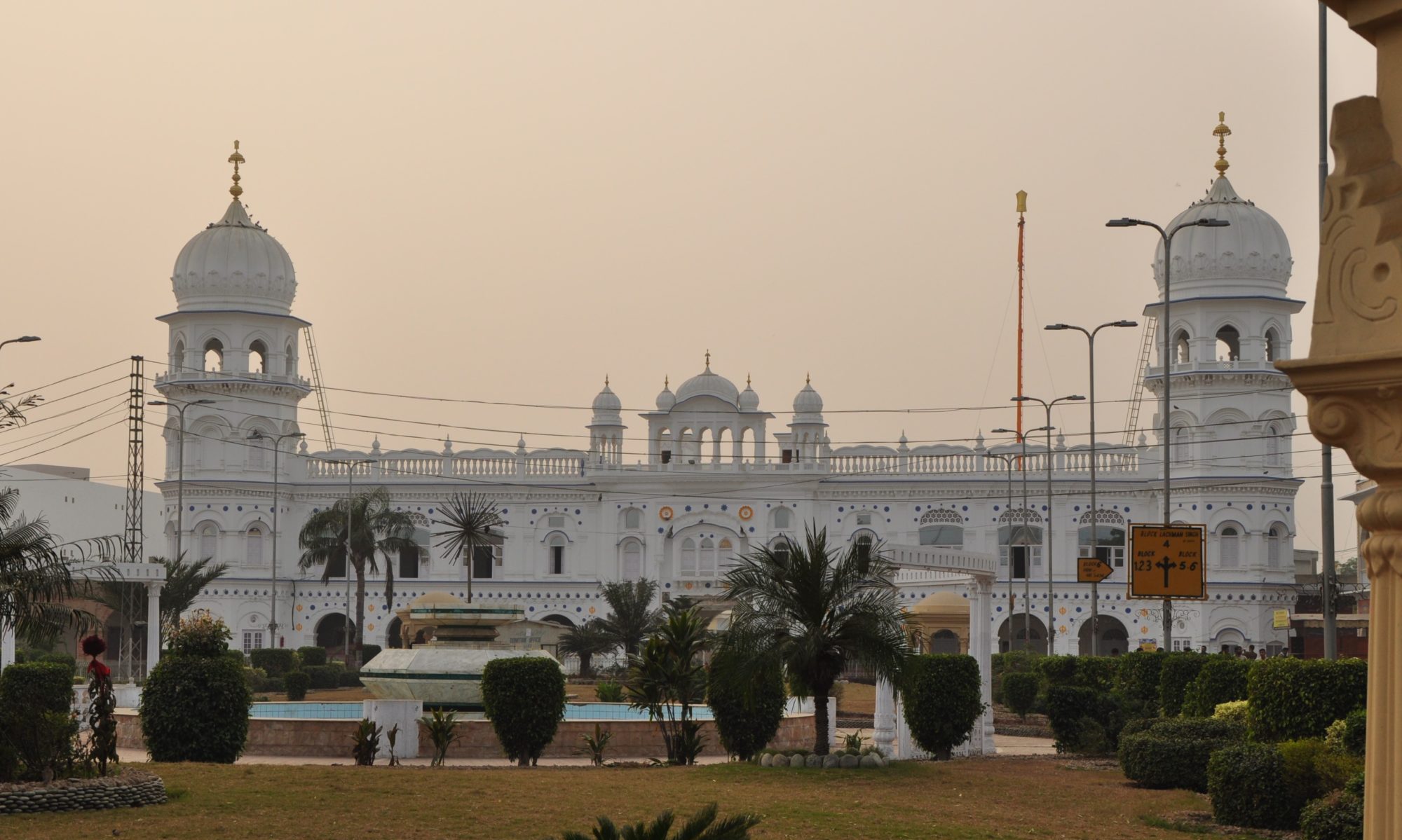Waheguru is the distinctive name of the Supreme Being in the Sikh dispensation, like Yahweh in Judaism and Allah in Islam. In Sikh scripture, the Guru Granth Sahib, the term Waheguru does not figure in the compositions of the Sikh Gurus, though it occurs therein, both as Vahiguru and Vahguru , in the hymns of Bhatt Gayand, the bard contemporary with Guru Arjan, and also in the Varan of Bhai Gurdas. Guru Gobind Singh used Vaheguru in the invocatory formula – Eke Ongkaar Sri Vaheguru Ji Ki Fateh, beside the traditional Ik Ongkaar Satgur Parsaad at the beginning of some of his compositions as well as in the Sikh salutation – Waheguru Ji Ka Khalsa Waheguru Ji Ki Fateh, varied as Sri Waheguru Ji Ki Fateh.
Modern scholars, affirm that the name Waheguru is owed originally to the Gurus, most likely to the founder of the faith, Guru Nanak, himself. Waheguru is a compound of two words, one from Persian and the other from Sanskrit, joined in a symbolic relationship to define the indefinable, indescribable Ultimate Reality. ‘Wah’ in Persian is an interjection of wonder and admiration. ‘Guru’ in Sanskrit means great, venerable, spiritual preceptor and has been frequently used by Guru Nanak and his successors for Sat-Guru (True Guru) or God. ‘Wah’ is wonder at the Divine might; ‘Gu’ is spiritual darkness while ‘Ru’ is illumination brought to eliminate this darkness. Cumulatively, the name implies wonder at the Divine Light eliminating spiritual darkness. It might also imply -‘Hail the Lord whose Name eliminates spiritual darkness’ Thus the two constituents of Waheguru (Wahe+Guru) implies the state of wondrous ecstasy and offering homage to the Lord.
The attitude of wonder and total submission at the sight of Divine Greatness is prominently visible in Guru Nanak when he wrote Gurbani, for example:-
Gagan Mai Thaal Rav Chand Deepak Bane Taarka Mandal Janak Moti – In the bowl of the sky, the sun and moon are the lamps; the stars in the constellations are the pearls (Raag Dhanasri, GGS – 663)
Kete Pavan Pani Vaisantar Kete Kaan Mahes, Kete Bareme Gharat Ghariah Roop Rang Ka Ves – So many winds, waters and fires; so many Krishnas and Shivas. So many Brahmas, fashioning forms of great beauty, adorned and dressed in many colours (Japji);
Vismaad Naad (wonderous is the sound) Vismaad Ved (wonderous is the wisdom)… ( Asa Di Vaar, GGS – 462-475)
Wonder and ecstasy are expressed at the cosmic order and its mystery full of Divinely-appointed system. This last saloke concludes with ‘ Ever present to our gage is wonder. At the sight of this mystery are we wonderstruck. Only by supreme good fortune is it unravelled.’ Continuing to the next Saloke to Pauri 4, Guru Ji says:
Bhai Vich Pavan Vahai Sad-Vau – In the Lord’s fear blows the wind, with its myriad breezes is expressed wonder at the cosmic ‘ fear ’ under which the universe operates in obedience to the Divine Law the Lord alone is exempt from such fear.
In Japji, besides other themes, one that stands out prominent is wonder at the cosmic order. In stanza 16 is the expression of wonder at the limitlessness of space. Stanzas 17-19, each beginning with ‘Asankh’ (infinite) are uttered in the same mood of wonder.
Waheguru is the Gurmantar for the Sikhs (invocatory formula received from the Guru) or NAAM for repetition (silently or aloud) and meditation upon the Supreme Reality. Naam (the Name) is sometimes compounded as Satnaam Waheguru to be chanted aloud in the congregation. Naam Japna (repeated utterance of God’s Name Waheguru ) is one of the three cardinal moral principals of Sikhism, the other two being Kirat Karni (honest labour) and Vand Chhakna (sharing one’s victuals with the needy)
Since the manifestation of the Khalsa by Guru Gobind Singh in 1699, Waheguru has been part of the Sikh salutation – Waheguru Ji Ka Khalsa Waheguru Ji Ki Fateh – (Hail the Khalsa who belongs to the Lord God ! Hail the Lord God to whom belongs the victory).
Kartar Surindar Singh
